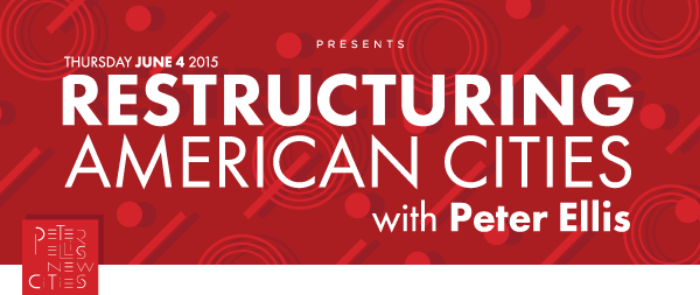 On June 4th, BuiltWorlds will host an evening charrette with international architect and urban planner Peter Ellis. His talk will draw on recent work in India, and explore the lessons that unique experience holds for the re-imagining of America’s aging metropolises. That night, attendees also should expect a major announcement from BuiltWorlds about an even broader, related initiative coming this summer, in association with Mr. Ellis and other thought leaders. Below, a preview of his thinking, written for the Financial Times.
On June 4th, BuiltWorlds will host an evening charrette with international architect and urban planner Peter Ellis. His talk will draw on recent work in India, and explore the lessons that unique experience holds for the re-imagining of America’s aging metropolises. That night, attendees also should expect a major announcement from BuiltWorlds about an even broader, related initiative coming this summer, in association with Mr. Ellis and other thought leaders. Below, a preview of his thinking, written for the Financial Times.
This article was written by Peter Ellis, FAIA
Our cities have been shaped by the industrial revolution. They are complex machines that bring together people to facilitate the production and movement of goods and ideas. But they are highly reactive mechanisms that grow rapidly and chaotically, all too often without a guiding strategic vision. In addition, much of the technology that supports them is obsolete, unsustainable and a significant contributor to global warming.
The industrial city evolved in opposition to nature. Now, we are able to create the city in harmony with nature. We can design cities that consume significantly less water and energy than our present urban habitats. We can make them completely regenerative organ- isms, creating and recycling all their resources.

In India, where hundreds of millions of people are migrating from rural to urban areas, an entirely new city for one million people is being designed. Jaypee Sports City, 30 mi. south of New Delhi, provides an opportunity to make a living, breathing metropolis that harvests and recycles its resources. Owned entirely by the Jaypee Group, an engineering to hospitality conglomerate, it is a unique example of private enterprise developing an entire city without government support.
“The industrial city evolved in opposition to nature. Now, we are able to create the city in harmony with nature.”
India is running out of water and is becoming hotter. The glaciers of the Himalayas, a life source for India, are diminishing year by year. We therefore created a vast network of parks as an urban reservoir to collect as much monsoon rainwater as the city consumes and feed it into the depleted aquifers. To cool the city, we designed the parks and streets to channel the prevailing winds. And all buildings are orientated so to avoid the worst of the sun’s heat. These simple but effective techniques, long forgotten in the industrial city, contribute to a more liveable urban climate.
The parks also provide pedestrian and bicycle paths as well as public transit routes. Buses run through the parks, avoiding traffic hold-ups on the roads. As the city grows, bus routes will
be supplemented by a metro. All schools, retail centers and civic amenities connect to transit routes in the green net.

In every neighborhood, we draw water from aquifers and purify, distribute and recycle it after treatment in a plant that converts human and organic waste to methane gas. The gas powers the city, reducing the amount of electricity required from the grid. Coupled with efficient building techniques, we can reduce urban energy and water use by 50 percent.
With Jaypee Sports City, we had a clean slate and a single owner, allowing us to integrate many systems into one structure that harnesses the forces of nature. But how do we restructure existing cities where much of our infrastructure already exists?
“We cannot do it overnight. But over 50 years… all infrastructure will have to be replaced due to wear and tear.”
We cannot do it overnight. But over 50 years, say, all infrastructure will have to be replaced due to wear and tear. As that takes place we can systematically upgrade our water, waste, energy and information networks with advanced sustainable systems.
Several cities are experimenting with converting all forms of waste to energy. Solar and wind power are also becoming increasingly viable. We can bring nature back into our cities, not only for its beauty but also to clean and cool our air, and to assist in capturing stormwater. This is already happening. Many cities are building green infrastructure, tearing up asphalt for bioswales
– organic landscape features that capture and filter water – while creating networks of pedestrian and bicycle paths. Such elements can be stitched together to make a green net that will provide a new, organic shape for cities.
But all this requires a strategic vision which understands that all urban systems are interdependent and that, when in harmony with nature, the result of those systems can be so much greater than the sum of their parts.
The author is founder of Peter Ellis New Cities and the architect of Jaypee Sports City. An award-winning former principal with SOM, and later Cannon Design, he can be reached at peterellis@elliscities.com.

Discussion
Be the first to leave a comment.
You must be a member of the BuiltWorlds community to join the discussion.